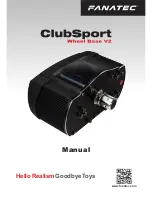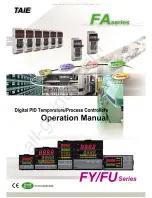
WebConsole - System Options
53
NetLinx Integrated Controllers (Firmware v4)- WebConsole & Programming Guide
Creating an SSL Server Certificate
Initially, a NetLinx Master is not equipped with any installed certificates. In order to prepare a Master for later use with "CA"
(
officially issued
) server certificates, it is necessary to:
First create a self-generated certificate
which is automatically installed onto the Master.
Secondly, enable the SSL feature
from the Enable Security page. Enabling SSL security after the certificate has been self-
generated insures that the target Master is utilizing a secure connection during the process of importing a CA server
certificate over the web.
NOTE:
A certificate consists of two different Keys: The Master Key is generated by the Master and is incorporated into the text string
sent to the CA during a certificate request. It is unique to a particular request made on a specific Master. Note that regenerating a
previously requested and installed certificate invalidates that certificate because the Master Key has been changed. The Public Key is
part of the text string that is returned from the CA as part of an approved SSL Server Certificate. This public key is based off the
submitted Master key from the original request.
1.
Click the
Create SSL Certificate
link (under
SSL Certificate Options
) to access the
Create SSL Certificate
window (FIG. 56).
2.
Fill out the information in this window, according to the descriptions in the
section below.
3.
Click
Create SSL Certificate
to update the Master with the information entered on this page. This process can take several
minutes.
SSL Certificate Entries
The following table describes the SSL Certificate entries presented in the
Create SSL Certificate
window (FIG. 56):
FIG. 56
Create SSL Certificate window
SSL Certificate Entries
Entry
Description
Bit Length:
Provides a drop-down selection with three public key lengths (512, 1024, 2048).
• A longer key length results in more secure certificates.
• Longer key lengths result in increased certificate processing times.
Common Name:
The Common Name of the certificate must match the URL Domain Name used for the Master.
Example: If the address used is www.amxuser.com, that must be the Common name and format used.
• The Common Name can not be an IP Address.
• If the server is internal, the Common Name must be
Netbios
.
• For every website using SSL that has a distinct DNS name, there must be a certificate installed. Each website for
SSL must also have a distinct IP Address.
• This domain name must be associated to a resolvable URL Address when creating a request for a purchased
certificate.
• The address does not need to be resolvable when obtaining a free certificate.
Action:
Provides a drop-down selection with a listing of certificate actions:
•
Display Certificate
- Populates the Server Certificate fields with the information from the certificate currently
installed on the Master.
This action is used only to display the information contained in the certificate on the
target Master.
•
Create Request
- Takes the information entered into these fields and formats the certificate so it can be
exported to the external Certificate Authority (CA) for later receipt of an SSL Certificate.
This action is used to request a certificate from an external source.
•
Self Generate Certificate
- Takes the information entered into the previous fields and generates its own SSL
Certificate.
This action is used when no previous certificate has been installed on the target Master, or a self-signed
certificate is desired.
•
Regenerate Certificate
- Takes the information entered into the previous fields and regenerates an SSL
Certificate. This action changes the Master Key.
This method of certificate generation is used to modify or recreate a previously existing certificate already on the
Master.
Organization Name:
Name of your business or organization. This is an alpha-numeric string (1 - 50 characters in length).
Organization Unit:
Name of the department using the certificate. This is an alpha-numeric string (1 - 50 characters in length).
City/Location:
Name of the city where the certificate is used. This is an alpha-numeric string (1 - 50 characters in length).
















































